Other Species of War Animals
Many species of animal war heroes have served all over the world. Here are some of them. From the largest mammal to one of the smallest of creatures, each of them served an invaluable role on the battlefield, in the jungles and in the trenches.
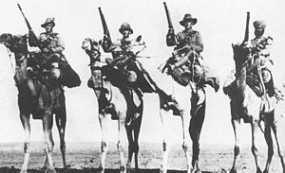
The Imperial Camel Corps (ICC) was a camel-mounted infantry brigade established in January 1916, by the British Empire, for service in the Middle East, during the World War 1.
Unlike the campaigns in Europe, which were bogged down in trench warfare, fighting in the Middle East was more fluid, with both man and animal subjected to extreme climate conditions. Camels were initially used as beasts of burden to transport equipment and supplies. However, the camel became an effective means of transport for the fighting troops.
By all accounts it appears the camels were well suited for the task; however their temperaments would sometimes pose a challenge!
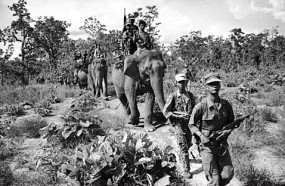 Non-battle-trained elephants were used for military purposes as late as World War 2, particularly because these animals could perform tasks in regions that were problematic for mechanized vehicles. Sir William Slim, commander of the British Fourteenth Army wrote about war elephants in his book “Elephant Bill.”
Non-battle-trained elephants were used for military purposes as late as World War 2, particularly because these animals could perform tasks in regions that were problematic for mechanized vehicles. Sir William Slim, commander of the British Fourteenth Army wrote about war elephants in his book “Elephant Bill.”
“They built hundreds of bridges for us, they helped to build and launch more ships for us than Helen ever did for Greece. Without them our retreat from Burma would have been even more arduous and our advance to its liberation slower and more difficult.”
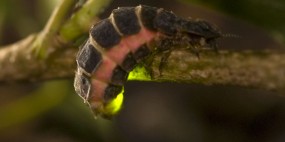 Glowworms, emitting bioluminescence, were unlikely “war animals,” but nonetheless played a vital role on the battlefield and in the trenches. As they huddled in the dank, dark trenches, soldiers would collect glowworms by the thousands and store them in jars. They provided portable lights for officers to study intelligence reports and battle maps. Glowworms were also used by all the troops to read their comforting letters from home.
Glowworms, emitting bioluminescence, were unlikely “war animals,” but nonetheless played a vital role on the battlefield and in the trenches. As they huddled in the dank, dark trenches, soldiers would collect glowworms by the thousands and store them in jars. They provided portable lights for officers to study intelligence reports and battle maps. Glowworms were also used by all the troops to read their comforting letters from home.
Pigeons and Canaries
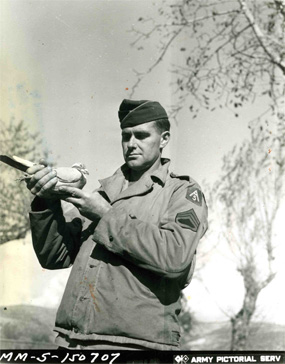
The National WWII Museum, Inc., National Archives original
Homing pigeons were used in large-scale intelligence efforts, throughout World War 1 and 2. The United States and Britain assembled special pigeon service units comprised of tens of thousands of birds. The war pigeons were considered invaluable by the British forces in World War 1, so much so that they issued specific orders to protect them. If a bird was intentionally injured or killed, the perpetrator could be sent to prison for up to six months.
More than 16,000 homing pigeons were parachuted into Europe during World War 2. One pigeon flew more than 150 miles back to England on D-Day to deliver the first official word of the allied troops landing in Normandy.
Miners took canaries and white mice into the tunnels with them to test for bad air. Only yellow canaries were considered proper, any other colours were returned.
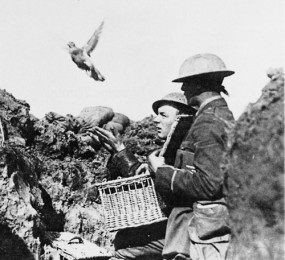
There is a memorial to Canaries and White Mice Mice entitled The Tunnellers Friends, in the Scottish National War Memorial in Edinburgh Castle.


